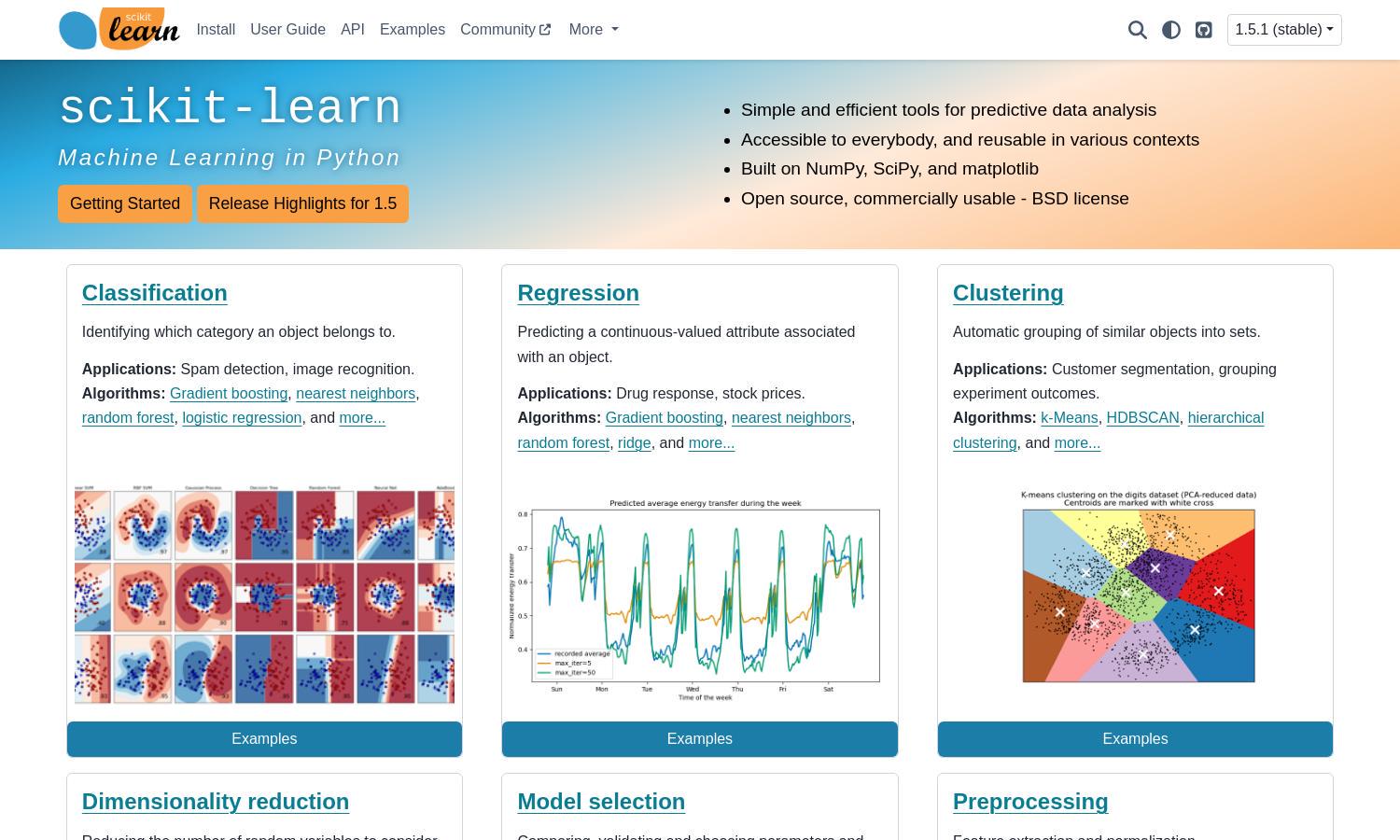scikit-learn

About scikit-learn
scikit-learn is a premier open-source machine learning library in Python designed for ease of use. Targeting data scientists and developers, it offers a variety of algorithms for classification, regression, and clustering. Its innovative design simplifies tasks, enabling users to perform predictive analysis seamlessly.
scikit-learn is free to use with a robust open-source model. There are no subscription tiers; users can freely access all features without any costs. This accessibility makes it ideal for both beginners and experts, allowing for extensive experimentation in machine learning without financial barriers.
The user interface of scikit-learn is intuitive and well-organized, allowing users to navigate easily through various features and documentation. It offers clear examples, detailed explanations, and an efficient layout, ensuring a streamlined experience for users at all skill levels to explore machine learning functionalities.
How scikit-learn works
Users begin interacting with scikit-learn by installing the library using Python's package manager. Once installed, they can access comprehensive documentation and tutorials to understand its features. Users can leverage various algorithms for tasks like classification and regression, easily importing datasets and preprocessing data to build predictive models efficiently.
Key Features for scikit-learn
Predictive Modeling Algorithms
scikit-learn stands out with its diverse range of predictive modeling algorithms. Users can efficiently implement classification, regression, and clustering techniques, benefiting from built-in functions that simplify model evaluation and selection, making machine learning accessible even to those with minimal coding experience.
Data Preprocessing Tools
An essential feature of scikit-learn is its robust data preprocessing tools. This allows users to normalize, transform, and prepare datasets seamlessly before modeling. Efficient preprocessing enhances model accuracy and performance, benefiting users by ensuring their data is ready for sophisticated machine learning tasks.
Model Selection and Evaluation
scikit-learn offers comprehensive model selection and evaluation tools, including cross-validation, grid search, and various metrics. This feature enables users to fine-tune their models and validate performance, ensuring the best possible outcomes for their machine learning projects and enhancing overall effectiveness.
You may also like:








